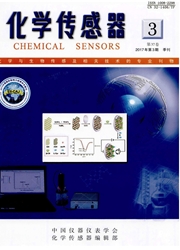

 中文摘要:
中文摘要:
毛细管电泳中的非接触电导检测技术自1998年问世以来受到了广泛的关注。随着理论研究的深入,检测器的设计不断改进以提高其响应灵敏度,同时使它更便于和已有的仪器设备联用,并应用于微流控芯片电泳中。分析对象也从最初的小无机离子拓展到有机组分和生物大分子,随着商品化检测器的出现,该技术趋于成熟。该文侧重介绍近年来有关该传感器的设计改进、与其它检测器联用、与样品富集技术联合方面的研究和应用进展。
 英文摘要:
英文摘要:
The popularity of contactless conductivity detection in capillary electrophoresis has been growing steadily since its introduction in 1998. Improvements have been made in the design of the detector in order to facilitate its handling, to allow easy incorporation into available instruments or to achieve higher sensitivity. The understanding of its fundamental working principles has been advanced and the detection approach has also been transferred to lab-on-chip devices. The range of applications has been extended greatly from the initial work on small inorganic ions to include organic species and biomolecules. Commercial devices are now available and the method can be considered a mature detection technique. In this article, the achievements in design of the detector, combination with other detection methods and samole Dreconcentration techniaues are reviewed.
 同期刊论文项目
同期刊论文项目
 同项目期刊论文
同项目期刊论文
 Analyzing the response of a contactless conductivity detector in capillary electrophoresis by a reso
Analyzing the response of a contactless conductivity detector in capillary electrophoresis by a reso Determinationof water-soluble ions in PM2.5 using capillary electrophoresis with resonantcontactless
Determinationof water-soluble ions in PM2.5 using capillary electrophoresis with resonantcontactless Nickel oxide hydroxide/platinum double layers modified n-silicon electrode for hydrogen peroxide det
Nickel oxide hydroxide/platinum double layers modified n-silicon electrode for hydrogen peroxide det A quartz crystal microbalance study of the adsorption kinetics of 1,2-dichloroethane on metal-organi
A quartz crystal microbalance study of the adsorption kinetics of 1,2-dichloroethane on metal-organi Photoelectrochemical Sensing of Hydrazine Based on Palladium Film Modifying N-silicon Electrode unde
Photoelectrochemical Sensing of Hydrazine Based on Palladium Film Modifying N-silicon Electrode unde A novel photo-electrochemical sensor for determination of hydroquinone based on copper hexacyanoferr
A novel photo-electrochemical sensor for determination of hydroquinone based on copper hexacyanoferr A photoelectrochemical sensor based on nickel hydroxyl-oxide modified n-silicon electrode for hydrog
A photoelectrochemical sensor based on nickel hydroxyl-oxide modified n-silicon electrode for hydrog Determination of water-soluble ions in PM2.5 using capillary electrophoresis with resonant contactle
Determination of water-soluble ions in PM2.5 using capillary electrophoresis with resonant contactle Cholesterol detection by self-assembled dodecyl thiol layers extracted cholesterol on the Ce-Sb codo
Cholesterol detection by self-assembled dodecyl thiol layers extracted cholesterol on the Ce-Sb codo Photocatalytic Degradation of Indigo Carmine by ZnO–Cu2O/Graphene Oxide Composites Synthesized via H
Photocatalytic Degradation of Indigo Carmine by ZnO–Cu2O/Graphene Oxide Composites Synthesized via H Investigation on kinetic processes of fabrication of honeycomb-patterned polystyrene film and adsorp
Investigation on kinetic processes of fabrication of honeycomb-patterned polystyrene film and adsorp Performance Improvement of Hydrogen Peroxide Sensorvia Cadmium Doped Nickel Oxide Modifying N-silico
Performance Improvement of Hydrogen Peroxide Sensorvia Cadmium Doped Nickel Oxide Modifying N-silico Molecular imprinting ratiometric fluorescence sensor for highly selective and sensitive detection of
Molecular imprinting ratiometric fluorescence sensor for highly selective and sensitive detection of Determination of amino acids by capillary electrophoresis with differential resonant contactless con
Determination of amino acids by capillary electrophoresis with differential resonant contactless con Nickel oxide hydroxide platinum double layers modified n-silicon electrode for hydrogen peroxide det
Nickel oxide hydroxide platinum double layers modified n-silicon electrode for hydrogen peroxide det Hydrogen Peroxide Detection with n-Silicon Photoelectrodes Modified by Nickel Hexacyanoferrate Films
Hydrogen Peroxide Detection with n-Silicon Photoelectrodes Modified by Nickel Hexacyanoferrate Films Sensitive detection of ascorbic acid and alkaline phosphatase activity by double-channel photoelectr
Sensitive detection of ascorbic acid and alkaline phosphatase activity by double-channel photoelectr Determination of equivalent circuit parameters of a contactless conductive detector in capillary ele
Determination of equivalent circuit parameters of a contactless conductive detector in capillary ele Determination of anions using monolithic capillary column ion chromatography with end-to-end differe
Determination of anions using monolithic capillary column ion chromatography with end-to-end differe Effect of univalent cations fluoride in F-Sb codoped SnO2 electrode on electro-catalytic degradation
Effect of univalent cations fluoride in F-Sb codoped SnO2 electrode on electro-catalytic degradation 期刊信息
期刊信息
